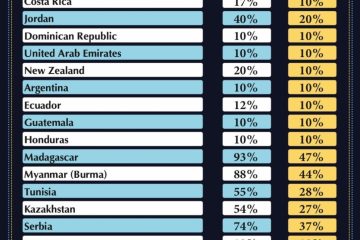Understanding China Tariffs: Recent Developments and Implications

Introduction
The topic of China tariffs remains a significant concern for global trade, affecting economies worldwide. Since the inception of trade tensions between the United States and China, tariffs have been used as a tool to influence economic relationships, setting the stage for discussions on trade policy and international relations. As both countries navigate their post-pandemic economic recovery, understanding the nuances of these tariffs is more pertinent than ever.
Recent Developments
In 2023, the Biden administration has continued to address tariffs imposed during the previous administration, evaluating their long-term effectiveness and impact on American industries. Currently, a range of tariffs remains in place on Chinese imports, affecting various sectors from electronics to agricultural products. The U.S. Chamber of Commerce has voiced concerns about the adverse effects these tariffs have on American businesses and consumers, arguing that they lead to higher prices and reduced competitiveness.
According to recent reports, approximately $370 billion in goods are currently subject to tariffs of up to 25%. These tariffs have impacted not just the trade balance but also domestic industries reliant on Chinese materials. For example, American manufacturers faced increased costs for raw materials due to the tariffs, complicating their operational strategies in an already challenging economic environment.
Global Reactions
China has responded to the tariffs by implementing its own set of trade restrictions, which has resulted in a tit-for-tat scenario that continues to evolve. The Chinese government has indicated a willingness to negotiate and resolve trade issues but emphasizes that tariffs need to be addressed as part of broader discussions on economic cooperation.
Other countries, particularly those in the Asia-Pacific region, have watched the developments closely. Nations that rely on trade with both the U.S. and China, such as Japan and South Korea, are keenly aware of the ripple effect these tariffs can have on global supply chains and trade dynamics. As such, they have begun seeking alternative markets and diversifying their partnerships to mitigate any fallout from U.S.-China tensions.
Conclusion
The issue of China tariffs continues to be a polarizing topic with significant implications for both local and global economies. As discussions evolve and stakeholders adjust their strategies, it is expected that there may be a shift in the approach to tariffs in the future. Economic analysts forecast that negotiations between the U.S. and China may lead to some reductions in tariffs, especially if both sides prioritize economic recovery. For consumers and businesses, the ongoing situation emphasizes the importance of staying informed about changes in trade policy and their potential impacts on the marketplace.








